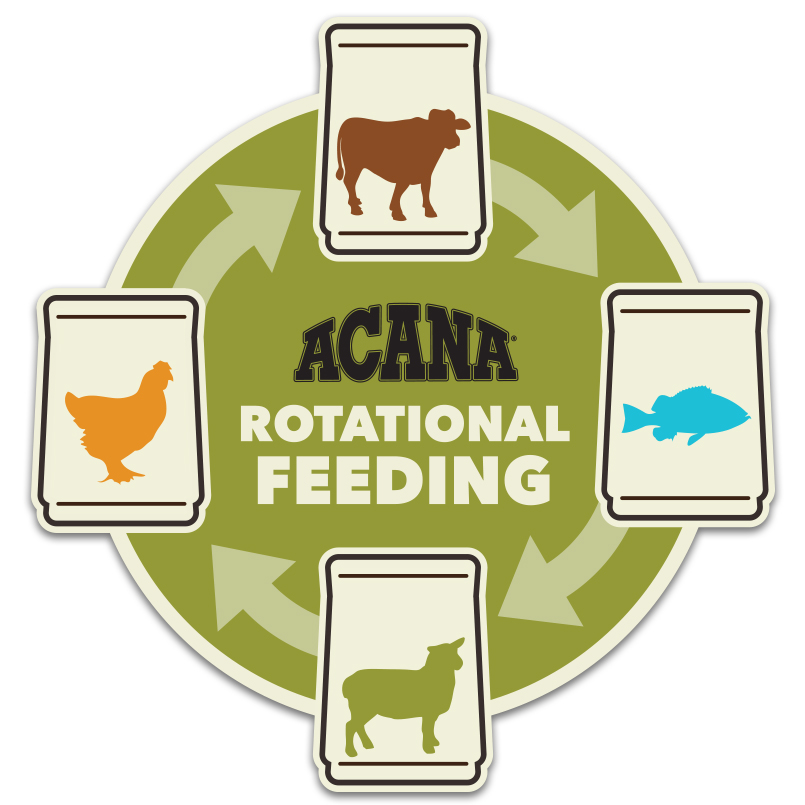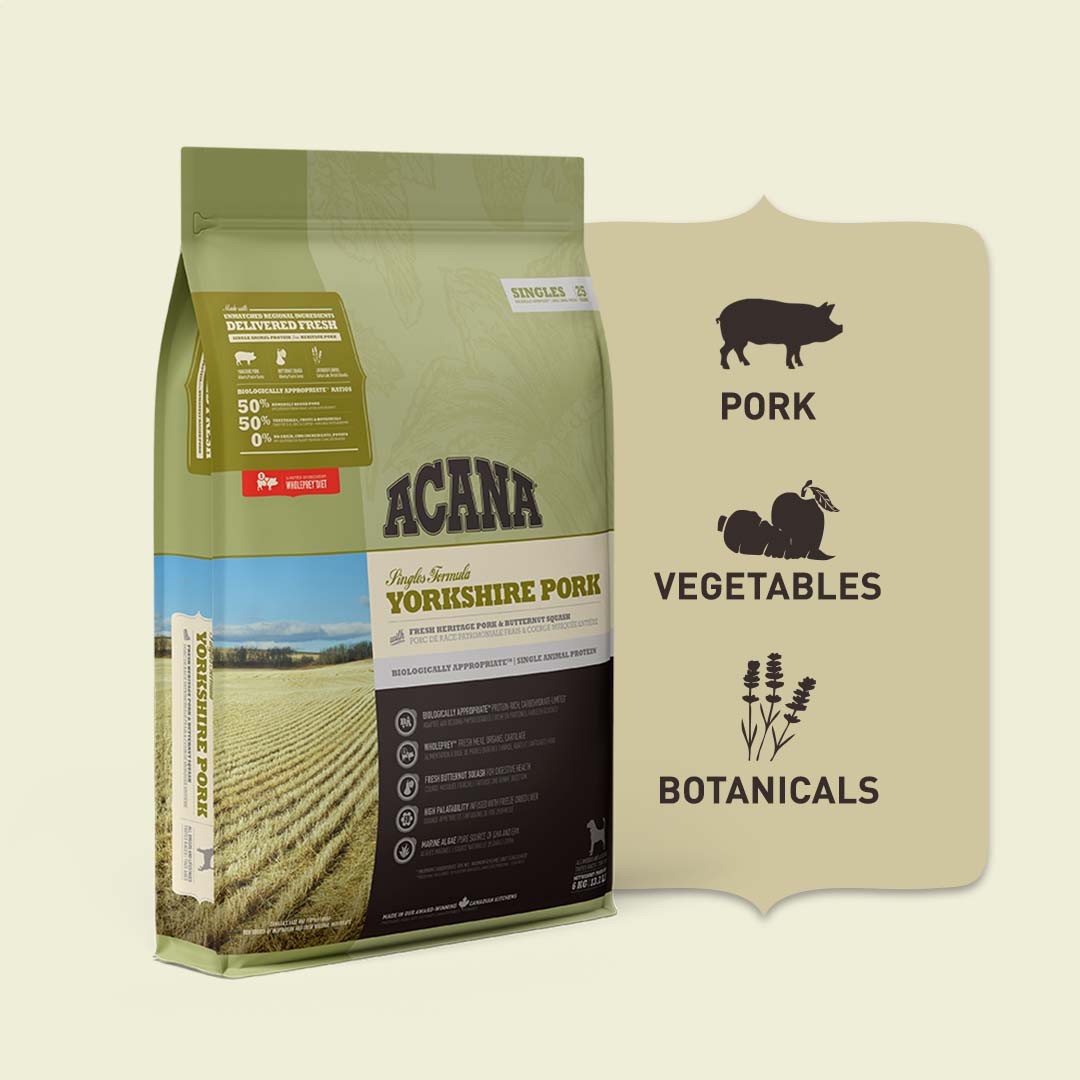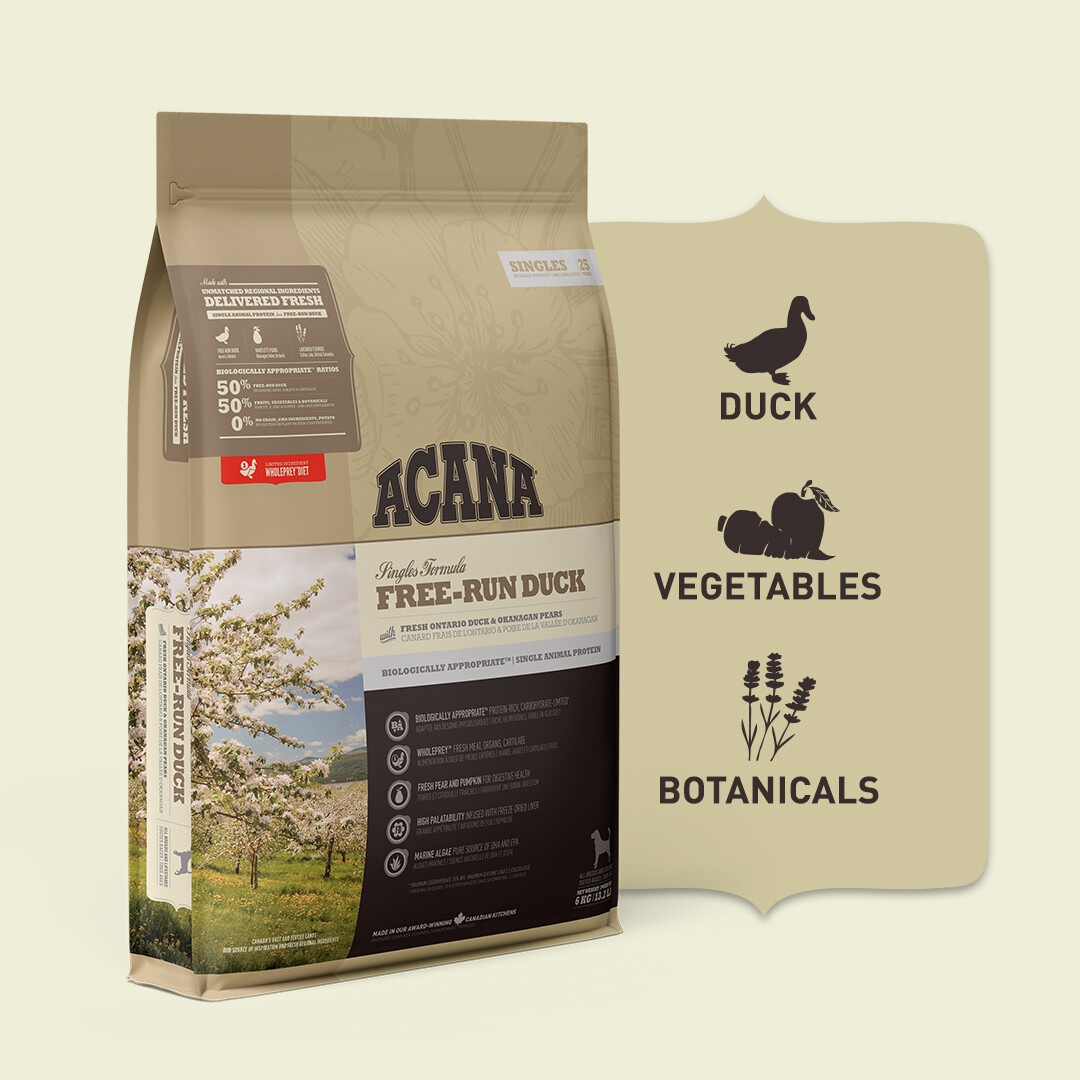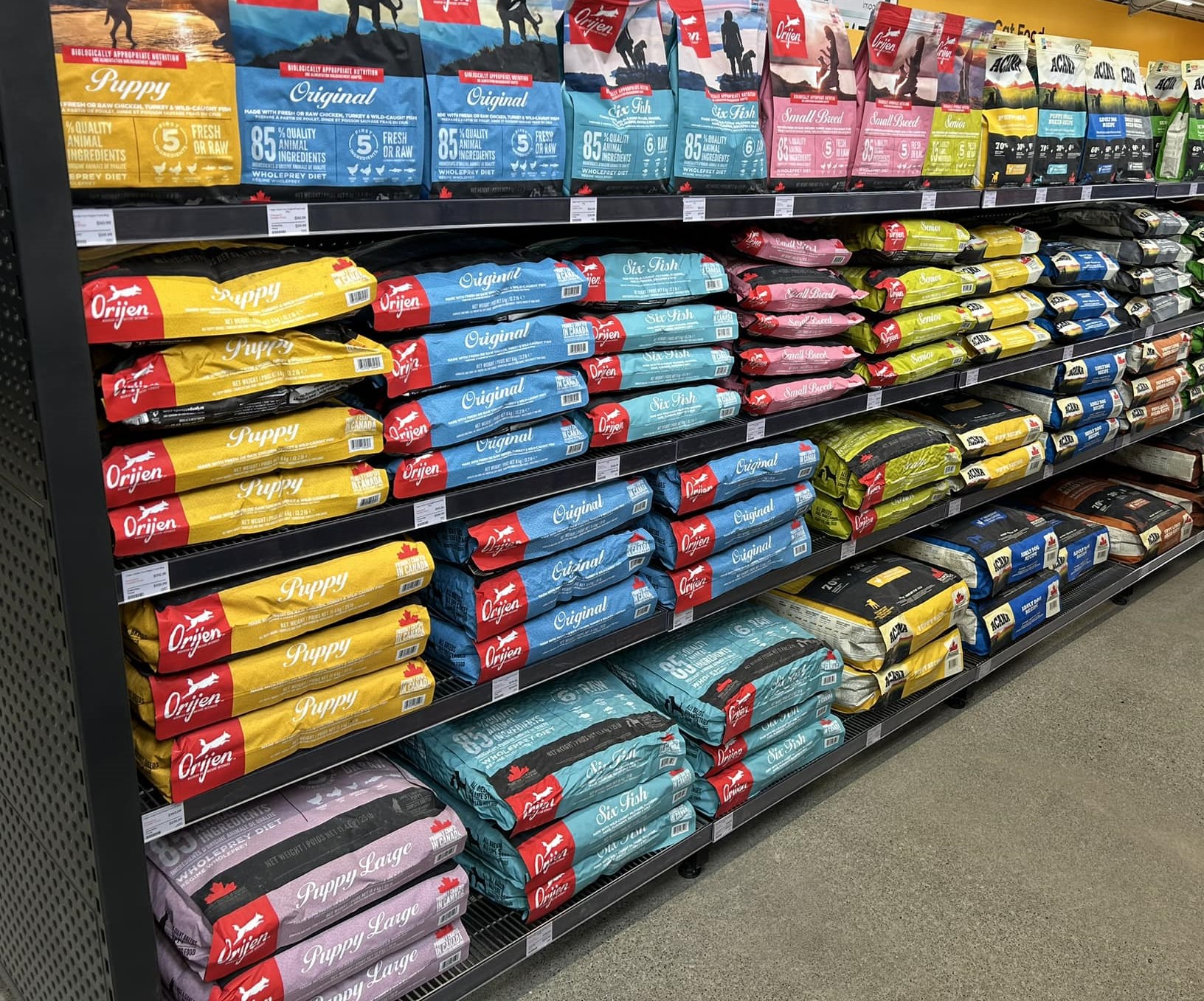Benefits of Rotational Feeding

WHAT IS ROTATIONAL FEEDING?
Rotational feeding simply means rotating between different recipes to ensure that your pet is getting nutrients from a wide range of ingredient sources to support overall health. Rotational feeding can be done daily, weekly, monthly or from bag to bag. How often, how quickly and how drastically to switch a dog’s food depends on their stomach’s sensitivity to change and types of proteins. There are different reasons to adopt a rotational feeding program, ranging from adding interest at meal times to adding nutritional variety.
BENEFITS of rotational feeding
Rotational feeding mimics your pet's ancestral diet by incorporating different animal sources, just like they would consume in the wild. Exposure to different proteins and ingredients helps to support a strong gastrointestinal environment which means happy tummies. It can also help with boredom or flavour-fatigue to help keep your pet excited at meal time.
If we delve a little deeper into the science of it all, different animal proteins have different amino acid and fatty acid profiles, as well as various minerals and vitamins. For example, beef contains significant amounts of iron but is lower in omega-3 fatty acids than pork1. Amino acids, which are the building blocks of proteins, differ slightly across different animal protein sources as well. Turkey meat contains higher amounts of the amino acid tryptophan than pork meat1. The dietary variation that dogs and cats’ wild cousins would experience is typically lost in our pets' regular feeding. Through rotational feeding, our pets gain diversity in their nourishment.
Protein Exposure
Food sensitivities exist in dogs but are often misdiagnosed or confused with food allergies2. Food allergies cause an
immune mediated response2, whereas food sensitivities are more common and traditionally manifest as poor food
reactions, including soft stools, excess gas, itchy dry skin and itchy paws and ears3. Just like humans, exposure
to different proteins at a young age may decrease the chances of developing food sensitivities. Feeding a rotational diet to a dog or
cat exposes them to a broader range of proteins and helps to prevent sensitivities.
Flavour Fatigue
Often pets experience flavour fatigue from eating the same diet every day, just as we would. Rotational feeding helps keep dogs and cats interested in their food. Rotational feeding also offers the novelty of new foods4. This can help boost intake for picky eaters or animals with a reduced appetite.
OPTIONS FOR ROTATIONAL FEEDING
The Acana Highest Protein range features some of ACANA's most nutrient-rich recipes with a variety of protein sources. All recipes within the range can be fed by themselves or rotated to kick-start your rotational feeding journey.
GOT A DIET SENSITIVE DOG? TRY ACANA SINGLES
Each recipe in the ACANA Singles range features a single animal protein, perfectly paired with fruits or vegetables to
suit dogs with food sensitivities or specific flavour preferences.
The Biologically Appropriate recipes in the ACANA Singles range are ideal for rotational feeding, especially for those dogs that do suffer from diet sensitivities. Each recipe within the range features a single protein source (hence the name ' Acana Singles') - Pork, Lamb or Duck. All diets are completely balanced to be fed alone and offer the unique opportunity to rotate between diets within the product line. Our ACANA Singles recipes are specifically designed to contain only five macro-ingredient classes with the same botanicals and low-glycemic carbohydrates allowing you to either avoid ingredients that may be causing an issue for your dog, or to add dietary variation, with less chance of gastrointestinal upset.
How to start rotational feeding
To start a rotational feeding, simply mix your pet’s current ACANA recipe to the new recipe at a 50/50 ratio of old food to new food. After a few days, you can begin feeding 100% new food. You can mix different ACANA flavors as often as you wish— every day, every week, or by the bag.

Content Sourced from our Suppliers> Orijen
Pet Food
& Acana
Pet Foods
References:
1. USDA Food composition database. Accessed April 4, 2018. DOI: https://ndb.nal.usda.gov/ndb/search/list
2. Chesney, C.J. 2006. Food sensitivity in the dog: a quantitative study. Journal of Small Animal Practice. 43(5): 203-207
3. Wills, R., & Harvey, R. 1994. Diagnosis and management of food allergy and intolerance in dogs and cats. Australian
veterinary journal.71(10):322-6
4. Stasiak, M. 2002. The development of food preferences in cats: the new direction. Nutritional neuroscience. 5(4):221-8
.jpeg)
.jpeg)
.jpeg)
.jpeg)

.jpeg)


.jpg)